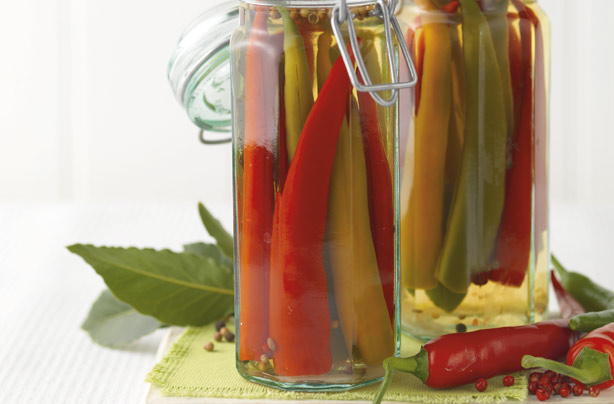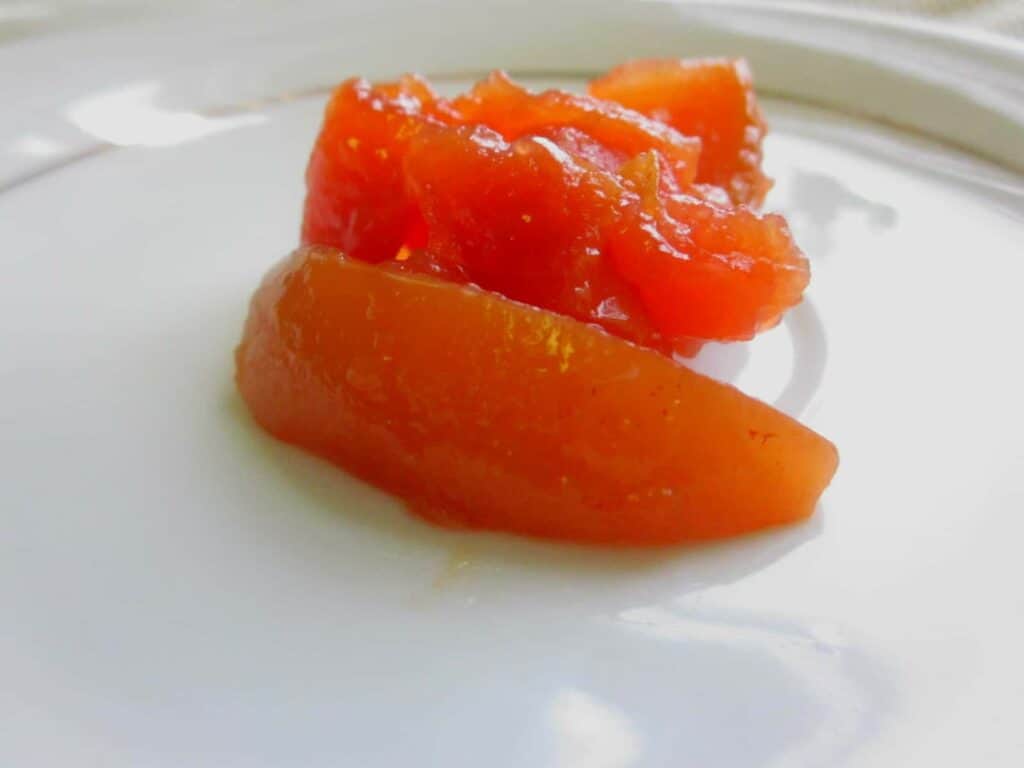OTAGO FARMERS MARKET MOBILE MENU 30/04/2016

Harvesting is upon us at the market this Saturday, warming pumpkin soup will be flowing and preserves of all varieties will be brewing in the kitchen.
Harvesting is a great time to get comfortable with storing your goodies for the oncoming winter, when produce will be slim and you will be hankering for the taste of summer! I will be doing many varieties of preserving, fermenting and tasting of market preserves which not only is of vegetables and fruit but also meats and fish and Havoc and Basecamp have a vast array of salamis.
CORTIDA
Cortida originates from El Salvador and is eaten on a daily basis with most meals. It is simple to make with many health benefits. I used whey which I got from straining yoghurt. It can however be made without the addition of this.
Makes 2 x 1 litre jars
Ingredients
1 large cabbage, cored and finely sliced
2-3 carrots grated
2 medium onions, finely sliced
2 garlic cloves, crushed (optional)
1 Tbsp dried oregano
¼-½ tsp red pepper flakes
3Tbsp sea salt
Method
Sterilise your jar and lid and set aside.
In a large bowl mix together the sliced cabbage, carrot, onion, oregano, pepper and salt.
You need to pound this mixture firmly for at least 5 minutes or until the vegetables have started to release a lot of liquid and the vegetables have softened a little.
Place in clean glass jars and press down firmly until juices come to the top of the cabbage. The top of the cabbage mixture should be at least 2 cm below the top of the jars.
Cover the jar with a tight lid, but you will have to release build-up of excess gas and pressure or if covering with muslin just make sure its secured tightly and you won’t have to release excess gas as this way it breaths.
After 3 days your Cortida is ready to eat but if you can wait longer the flavour will be more matured.
Best stored in the fridge.
EASY PICKLED VEGETABLES

This method of pickling is one of the first I ever did as a young chef. It is a great recipe as you can adapt the vegetables to suit the seasons. Also you can mix up the array of herbs and spices to create your own personalised jars.
Makes 1 litre jar
Ingredients
For the Pickling Brine
2 cups white vinegar
2 cups water
2 Tbsp sugar
Coarse salt
1 tsp whole black peppercorns
4 fresh bay leaves
½ tsp celery salt
½ tsp coriander seeds
Pinch chilli (optional)
4 fresh bay leaves
Vegetables
1 bulb fennel, tops removed and cut into thin wedges
1 carrot, cut into sticks
1 red pepper, seeds removed and cut into 4-6 pieces
1 cup cauliflower florets
Method
Wash and sterilise the jar and lid.
Prepare all the vegetables and set aside.
In medium sized saucepan add the vinegar, water, sugar and salt and bring to the boil.
Add the peppercorns, bay leaves, celery salt, coriander, chilli and bay leaves. Bring back to the boil.
Add the prepared vegetables and cook for 2-3 minutes.
Remove from the heat and drain off the brine, but make sure you keep the brining liquid!
Place the clean jar over a plate and fill with the hot vegetables. Pour over the hot brining liquid so that it overflows. Seal with lid and wipe the jar clean.
Store in the fridge when cold for up to 8 weeks.
GARDEN PESTO
This is a forager’s delight and one full not only of a variety of flavours but one rich in nutrients and minerals.
Makes 250 ml
Ingredients
2 cups mixed leaves (rocket, watercress, kale, spinach. Basil, parsley) – choice is yours 5 mint leaves 3-4 cloves garlic
¼ cup almonds, walnuts, pinenuts, sunflower or pumpkin seeds (optional) ½ tsp salt 30 g feta cheese or parmesan
1 lemon, juice of ½ -1 ½ cup olive oil
Method
Begin my adding the leaves, mint and garlic together, add a pinch of salt and mash well in mortar and pestle (otherwise pulse in food processor).
Add the nuts if using and combine coarsely.
Add the lemon juice and crumble in the feta cheese, stir as you pour in the oil to lightly emulsify.
Taste and adjust the balance of flavour if desired.
Store in the fridge for up to 2 weeks if covered with layer of oil.
PICKLED CHILLIES

Quick and easy and of course a great way to store your chillies, but they also add a wonderful kick to your dishes.
Ingredients
150g long green chillies 150ml warm water 100ml rice vinegar 1 Tbsp salt 2½ Tbsp sugar
Method
Thinly slice the chillies and rinse in warm water (this is to remove the seeds and some of the heat of the chillies).
Drain and put the chillies (minus the seeds which will be at the bottom of the sieve) in a jar.
Stir together the other ingredients until the sugar and salt is dissolved. Pour this over the chillies and cover. Place in a jar in the fridge.
QUINCE PRESERVES

This recipe derives from the Middle East and is lovely used spread over fresh bread and butter or served alongside cheese.
Makes 1 litre
Ingredients
2 lbs quinces, or about four quinces, washed and scrubbed very well
1.5-2 cups of sugar 4 cups water (use 5 cups if you want a runnier jam, or syrup leftovers)
Juice of 1 lemon
4 cinnamon sticks
Method
Wash the quinces very well, scrubbing the peel with a sponge or something similar to remove the light fur on the outside.
Without peeling, halve the quinces and remove the core and seeds. Slice the quinces into 2cm thick slices, and then cut the larger slices in half. Submerge the quince slices in a big bowl with enough water to cover for several hours, to soften them before cooking. Leaving them overnight is fine, but try to ensure all quinces are submerged as some discolouration may occur.
In large, wide heavy-based pot, add the sugar, water and lemon juice and cook them over medium heat, until the sugar dissolves. Add the cinnamon sticks and bring to a boil.
Drain the quince slices and add them to the pot. Bring the pot a boil, and cook, uncovered, over medium-high anywhere between one hour (for soft and golden quinces) to 2 ½ hours (for a richer, browner preserve). If you are left with too much liquid, strain some of it and use as a syrup to sweeten soda water or cocktails.
Once your preserve is ready, fill the jars, taking care to leave a small gap for vacuum to be created. Seal your jars, label and store in dark, cool place until required.
APPLES
With the extensive array of apples and the varied uses they all have it is great to make the most of them and turn them into jams, jellies, relishes or even stashing them in the freezer for another day.
To freeze, apples should be peeled, cored, then stewed with a little lemon juice to prevent browning, or puréed and sieved then frozen.
For jellies with chopped sage, rosemary or mint; or jam with blackberries; or use up apples with other surplus veg like tomatoes or marrows and make chutne
BEETROOT AND APPLE RELISH

Sweet and tangy combination works a real treat in the relish. It will go with so much.
Ingredients
1kg small to medium red beets washed well and patted dry
2 Tbsp extra-virgin olive oil
Coarse salt and freshly ground pepper
1 small onion, thinly sliced
3 cups cider vinegar
1 ½ cups water
1 ½ cups sugar
4 Granny Smith apples, peeled and cut into 1cm pieces
½ tsp Dijon mustard
Method
Preheat oven to 190C.
Place beetroot on a sheet of baking paper lined tin foil; drizzle with oil. Season with salt and pepper. Fold edges to form a packet. Place on a baking sheet, and roast beets until tender, about 1 hour. Unwrap; let cool slightly, then peel. Cut into 1cm sized pieces.
Bring onion, vinegar, water, and sugar to a simmer in a medium saucepan over medium heat. Cook until sugar dissolves, about 3 minutes. Remove from heat, and stir in beets, apples, and mustard.
Cook gently until the apples soften and the relish thickens together.
Divide among 500ml sterilised glass jars using a slotted spoon. Clean the rims and then close with screw bands and lids. Wipe the jars, label and ready to use whenever you need it!
ALISON WOULD LIKE TO THANK THE FOLLOWING VENDORS FOR THEIR OUTSTANDING PRODUCTS.
ROSEDALE ORCHARD – pumpkins
MCARTHURS BERRY FARM – cauliflowers and cabbage
WAIRUNA ORGANICS – carrots
BRYDONE ORGANICS – beetroot and fennel
HAVOC PORK – salami
KAKANUI PRODUCE – chillies
ETTRICK GARDENS – quince
GILBERTS FINE FOODS – seasonal harvest bread





